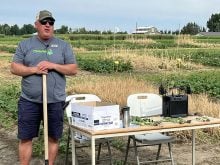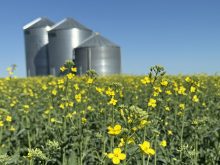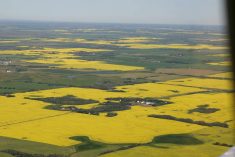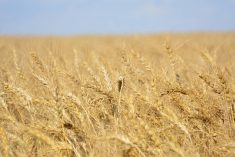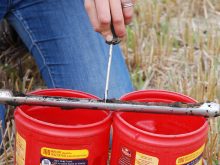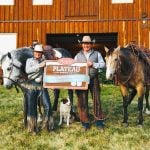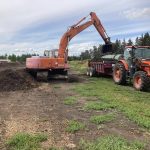RESTON, Man. – Kelly Toews saw a worrisome trend on his native pasture a few years ago.
The grass was “giving out,” as he puts it, which meant a declining amount of forage for his cattle during the summer.
By the end of the grazing season, his pasture was like a pool table top because it had been grazed heavily without much chance to recover.
“We were seeing a lot of bare patches on the ground,” Toews said during a tour of his farm on June 14. Undesirable plants were also becoming more evident in his pasture.
Read Also

AI expected to make itself felt in food systems
Artificial intelligence is already transforming the food we eat, how farmers produce it and how it reaches the consumer, experts say
His search for an alternative led him to twice-over grazing, a method of pasture management developed by rangeland scientist Lee Manske of North Dakota State University.
Toews began using the method in 1998. He ran cross fences to create paddocks on a quarter section of native pasture and built a water station with access from each of the paddocks.
Toews does not let his cattle onto the first paddock until June 1, which is when native grasses tend to reach the third-leaf stage.
The cattle are then moved to a new paddock every 11 days. Once each paddock has been grazed, Toews begins a second rotation so the paddocks will have been grazed twice by mid-October.
The cattle are then removed from the native pasture so that grasses can build reserves for the winter and emerge healthy the following year.
Toews said the improvement to his pasture is considerable. Desirable species of grass are making a comeback and there’ s more forage on the land.
“We’ re fairly happy with it,” he said.
Manske said waiting until native pasture reaches the third-leaf stage is one of the keys in twice-over grazing.
Producers often think they can save money by taking cattle off hay and putting them on native pasture in May.
Those producers may not realize how much forage potential they lose by letting their cattle onto pasture too early.
According to Manske, grazing native pasture before it reaches the third-leaf stage can cut its annual forage potential in half.
But by waiting until the grasses are in the third-leaf stage, producers can increase the amount of forage available on the pasture by 35 to 40 percent.
Manske said it can be several years before native pastures start showing their full potential after the switch is made.
However, he has done studies that prove the many benefits of twice-over grazing.
One study found that calf weight gain per acre was 39 percent greater than gains with season-long grazing over four and a half months.
His research also found improved nutritional quality in the forage, increased stocking rates, better economic returns from the land and the cattle, and improved wildlife habitat.
Producers thinking about adopting the twice-over grazing system need to understand the system first.
Manske said it will work on a pasture with no less than three paddocks and no more than six. During the first rotation, cattle should be on each paddock for at least a week and no longer than 17 days.
He said tame grass pastures are an option for people who like to have their cattle on pasture in May and later in the fall.
Meadow brome and crested wheatgrass are two possibilities. Crested wheatgrass tends to reach the third-leaf stage before the end of April.
In North Dakota, wild rye pastures help extend the grazing season into November.





